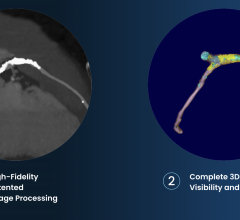December 28, 2012 — Among deployed U.S. service members who died of combat or unintentional injuries between 2001-2011 and underwent autopsies, the prevalence of coronary atherosclerosis was 8.5 percent, with factors associated with a higher prevalence of the disease including older age, lower educational level and prior diagnoses of dyslipidemia, hypertension and obesity, according to a clinical study in the Dec. 26 issue of JAMA.
According to background information in the article, “An early breakthrough in the understanding of the natural history of atherosclerotic heart disease was achieved in 1953, when Enos and colleagues at the Armed Forces Institute of Pathology reported a 77 percent prevalence of coronary atherosclerosis among U.S. soldiers killed in the Korean War. By demonstrating anatomically that atherosclerosis affected a large proportion of young individuals without clinical evidence of heart disease, their study revolutionized the understanding of the onset and progression of cardiovascular disease. A follow-up report in the Vietnam War era, along with a number of autopsy studies in the civilian population, provided additional evidence that the onset of atherosclerosis may occur at an early age.” Since the publication of these studies, health policies have been implemented to reduce the risk of cardiovascular disease associated with risk factors such as hypertension, diabetes, cholesterol and smoking.
Bryant J. Webber, M.D., Uniformed Services University of the Health Sciences, Bethesda, Md., and colleagues conducted a study to assess the prevalence of atherosclerosis in the U.S. armed forces. The study included all U.S. service members who died of combat or unintentional injuries in support of Operations Enduring Freedom and Iraqi Freedom/New Dawn between October 2001 and August 2011, and whose cardiovascular autopsy reports were available at the time of data collection in January 2012. Prevalence of atherosclerosis was analyzed by various demographic characteristics and medical history. Classifications of coronary atherosclerosis severity were determined prior to data analysis and designed to provide consistency with previous military studies: minimal (fatty streaking only), moderate (10-49 percent luminal [interior of the vessel] narrowing of one or more vessels) and severe (50 percent or more narrowing of one or more vessels). Of the 3,832 service members included in the analysis, the average age was 26 years.
The overall prevalence of coronary or aortic atherosclerosis was 12.1 percent. The prevalence of any coronary atherosclerosis was 8.5 percent; severe coronary atherosclerosis was present in 2.3 percent, moderate in 4.7 percent and minimal in 1.5 percent. The researchers found that age consistently produced the strongest association with prevalent atherosclerosis. Service members with atherosclerosis (average age 30.5) were approximately 5 years older than those without; those 40 years of age and older had about 7 times the prevalence of disease as compared with those 24 years of age and younger (45.9 percent vs. 6.6 percent).
Lower education level and higher military entrance body mass index (BMI) were significantly associated with prevalent atherosclerosis, after adjusting for age. As compared with those who completed high school or less, those who completed at least some college had lower prevalence of disease. As compared with those with a normal BMI on military entrance, those with a BMI in the overweight or obese range had a significantly higher prevalence of atherosclerosis. The authors also found that age-adjusted atherosclerosis prevalence was associated with several diagnoses. As compared with those with no major cardiovascular risk factor diagnoses, those with a diagnosis of dyslipidemia (50.0 percent vs. 11.1 percent), hypertension (43.6 percent vs. 11.1 percent) or obesity (22.3 percent vs. 11.1 percent) had a significantly higher prevalence of atherosclerosis.
The researchers note that the prevalence rates found in this study demonstrate a decline from the rates of 77 percent noted in the Korean War and 45 percent in the Vietnam War, but add that targets for further improvement remain.
“Military and civilian healthcare systems should continue to help patients reduce their cardiovascular risk factors, beginning in childhood and continuing throughout adult life. Despite remarkable progress in prevention and treatment, cardiovascular disease remains the leading cause of death in the United States and other developed nations, and even small improvements in the prevalence of smoking and other risk factors may reduce death rates further and prolong healthy lives.”
Editor’s Note: This study was supported by the Uniformed Services University of the Health Sciences, Armed Forces Medical Examiner System and Armed Forces Health Surveillance Center. All authors have completed and submitted the ICMJE Form for Disclosure of Potential Conflicts of Interest and none were reported.


 January 14, 2025
January 14, 2025 







